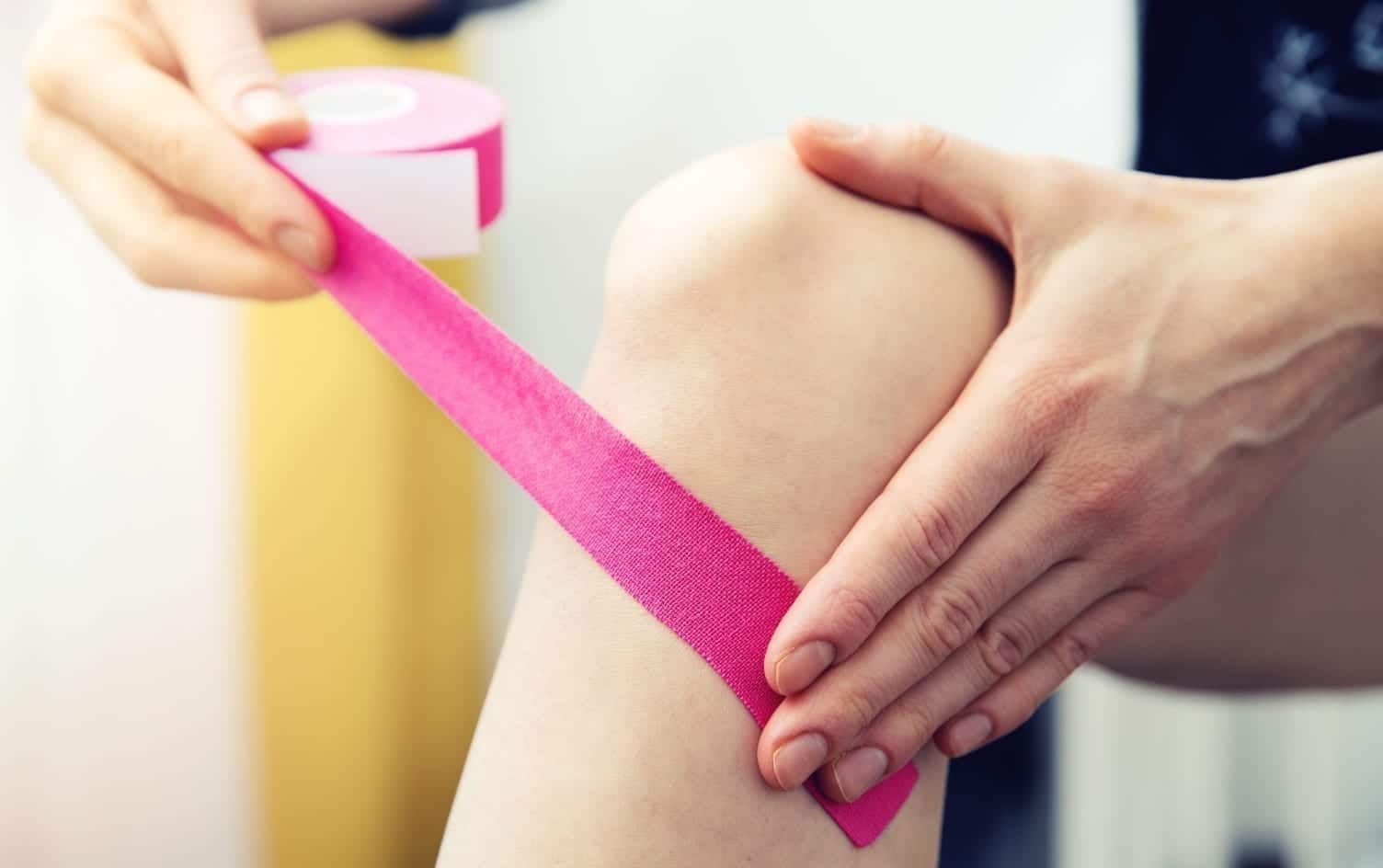Chances are you’ve already seen eye-catching kinesiology tape (aka KT or kinesio tape) on professional athletes. Quarterback Tom Brady used it to help him play without discomfort in the Super Bowl, while professional golfer Jordan Speith was spotted wearing it on his wrist when competing.
But weekend warriors and those who walk for exercise can make use of kinesio tape, too, whether battling knee pain or recovering from shin splints.
Here, what you need to know about kinesio tape and how you can use it to support your walking routine:
WHAT IS KINESIO TAPE?
“Kinesiology tape is a therapeutic tape used to treat musculoskeletal injuries,” says Daniel Giordano, doctor of physical therapy and certified strength and conditioning specialist at Bespoke Treatments. “Originally created by Japanese chiropractor Kenzo Kase in the 1970s, the majority of KT tapes are made from cotton and an acrylic adhesive. They’re latex-free, hypoallergenic and water-resistant (meaning you can shower with it).”
Designed to imitate the elasticity of human skin, kinesio tape is not to be confused with typical athletic tape: “White tape is extremely rigid and doesn’t do much more than temporarily cast an area,” explains Giordano.
HOW DOES KINESIOLOGY TAPE WORK?
While kinesio tape is widely used, more research is needed to show exactly how it does (or doesn’t) work. For example, a systematic review in the European Journal of Physical and Rehabilitation Medicine finds kinesio tape appears to quickly reduce pain, but there is no support for any long-term effect in regard to improvements in pain reduction, muscle strength or range of motion.
“Although the current research on kinesiology tape has not been conclusive to confirm the effectiveness of the tape, clinicians around the world have continued to see an improvement in their patients’ symptoms when kinesiology tape is applied,” says Giordano.
HOW KINESIOLOGY TAPE CAN SUPPORT YOUR WALKING ROUTINE
“KT tape is versatile,” says Bianca Beldini, a doctor of physical therapy and USA Triathlon certified coach. “It can be used to support overworked and tired muscles, provide support to fascia (connective tissue between your skin and muscles), and improve the pliability of strained tissues.” Here, a few ways you can use kinesio tape to keep up with your walking workouts:
- Ease Walking Pain
Kinsesio tape can help zap walking pain fast. Theoretically, it “unloads” your muscle by supporting your fascia when applied to your skin, explains Beldini. “It may also work by impacting pain receptors on your skin and altering pain signals to the brain,” adds Giordano. As a result, you feel better almost immediately. Case in point: Adults with osteoarthritis who wore the tape during walks reduced their pain and improved their range of motion and proprioception, per a study in the American Journal of Physical Medicine and Rehabilitation. - Support Recovery From Injuries
“Kinesiology tape may be used to help with the treatment of walking injuries, as application of the tape improves blood flow and facilitates the healing process,” says Giordano. It can also help reduce swelling: “When a tissue is injured, the immune system sends more lymph fluid to the area to help ‘clean up’ the injured tissue. If it accumulates, it can cause swelling,” explains Beldini. KT tape can form a boundary around the irritated tissue, effectively keeping lymph fluid from spreading, she says. - Stabilize Muscles
“By giving targeted areas much-needed support and stability, KT tape can help you start walking with confidence again after common walking injuries like runner’s knee, plantar fasciitis, Achilles tendonitis and shin splints,” says Beldini. Furthermore, it may help delay fatigue in the newly healed area as you gradually return to your walking routine, adds Giordano. - Improve Posture
Good posture is key for quality walking form, but if yours is off, KT tape can help. “Kinesiology tape may be used to give you tactile cueing to help with walking posture,” says Giordano. For example, if you visit a physical therapist, they can use expertly placed KT tape to help combat and prevent poor alignment (such as a rounded upper back), he explains.
HOW TO USE KINESIOLOGY TAPE FOR WALKING
Before you buy yourself a roll, you’re best off consulting a physical therapist who can show you how to properly apply it, says Beldini. “As someone with biomechanical knowledge, I often see patients put the tape on wrong — they might pull it too tightly, angle it or apply a stretch in the wrong direction,” she says.
Beyond this, the proper amount of tension is key, too: Put it on too tightly and you could end up in a dangerous tourniquet situation, says Beldini. If you don’t stretch it out at all, though, you may have little impact on the area other than a placebo effect, says Giordano. Ultimately, the goal is to feel supported yet mobile.




